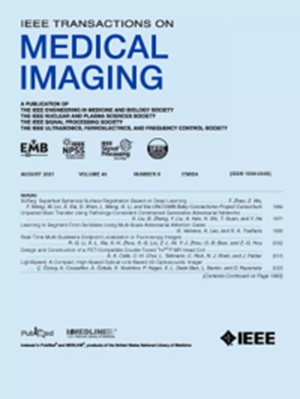基于图转换器的自监督神经元形态表示。
IF 9.8
1区 医学
Q1 COMPUTER SCIENCE, INTERDISCIPLINARY APPLICATIONS
引用次数: 0
摘要
有效表征神经元形态对细胞分型和理解脑功能至关重要。然而,神经元形态的复杂性不仅存在于类间结构差异中,还存在于类内发育阶段和环境条件的差异中。这种多样性对现有方法在表示神经元形态时如何平衡鲁棒性和判别能力提出了重大挑战。为了解决这个问题,我们提出了SGTMorph,这是一个混合图转换器框架,它利用图神经网络的局部拓扑建模能力和变形器的全局关系推理能力来显式编码神经元结构信息。SGTMorph采用了一种基于随机行走的位置编码方案,以促进信息在神经元图之间的有效传播,并引入了一种空间不变的编码机制,以提高对不同形态的适应性。这种综合的方法能够在保持生物保真度的同时,对神经元形态进行鲁棒和全面的表征。为了实现无标签特征学习,我们设计了一种基于几何和拓扑相似性度量的自监督训练策略。在5个数据集上的大量实验证明了SGTMorph在神经元形态分类和检索任务上的优越性能。此外,它在神经科学研究中的实际应用是通过准确预测两种功能特性来验证的:体细胞的层状分布和轴突投影模式。代码公开在:https://github.com/big-rain/SGTMorph。本文章由计算机程序翻译,如有差异,请以英文原文为准。
Self-Supervised Neuron Morphology Representation with Graph Transformer.
Effective representation of neuronal morphology is essential for cell typing and understanding brain function. However, the complexity of neuronal morphology arises not only in inter-class structural differences but also in intra-class variations across developmental stages and environmental conditions. Such diversity poses significant challenges for existing methods in balancing robustness and discriminative power when representing neuronal morphology. To address this, we propose SGTMorph, a hybrid Graph Transformer framework that leverages the local topological modeling capabilities of graph neural networks and the global relational reasoning strengths of Transformers to explicitly encode neuronal structural information. SGTMorph incorporates a random walk-based positional encoding scheme to facilitate effective information propagation across neuronal graphs and introduces a spatially invariant encoding mechanism to improve adaptability to diverse morphologies. This integrated approach enables a robust and comprehensive representation of neuronal morphology while preserving biological fidelity. To enable label-free feature learning, we devise a self-supervised training strategy grounded in geometric and topological similarity metrics. Extensive experiments on five datasets demonstrate SGTMorph's superior performance in neuron morphology classification and retrieval tasks. Furthermore, its practical utility in neuroscience research is validated by accurate predictions of two functional properties: the laminar distribution of somas and axonal projection patterns. The code is publicly at: https://github.com/big-rain/SGTMorph.
求助全文
通过发布文献求助,成功后即可免费获取论文全文。
去求助
来源期刊

IEEE Transactions on Medical Imaging
医学-成像科学与照相技术
CiteScore
21.80
自引率
5.70%
发文量
637
审稿时长
5.6 months
期刊介绍:
The IEEE Transactions on Medical Imaging (T-MI) is a journal that welcomes the submission of manuscripts focusing on various aspects of medical imaging. The journal encourages the exploration of body structure, morphology, and function through different imaging techniques, including ultrasound, X-rays, magnetic resonance, radionuclides, microwaves, and optical methods. It also promotes contributions related to cell and molecular imaging, as well as all forms of microscopy.
T-MI publishes original research papers that cover a wide range of topics, including but not limited to novel acquisition techniques, medical image processing and analysis, visualization and performance, pattern recognition, machine learning, and other related methods. The journal particularly encourages highly technical studies that offer new perspectives. By emphasizing the unification of medicine, biology, and imaging, T-MI seeks to bridge the gap between instrumentation, hardware, software, mathematics, physics, biology, and medicine by introducing new analysis methods.
While the journal welcomes strong application papers that describe novel methods, it directs papers that focus solely on important applications using medically adopted or well-established methods without significant innovation in methodology to other journals. T-MI is indexed in Pubmed® and Medline®, which are products of the United States National Library of Medicine.
 求助内容:
求助内容: 应助结果提醒方式:
应助结果提醒方式:


